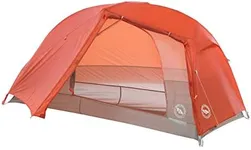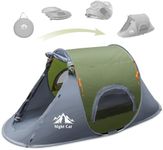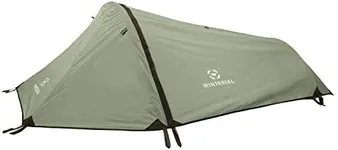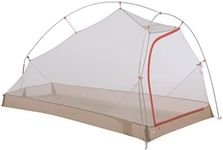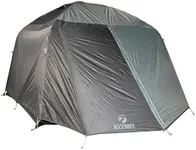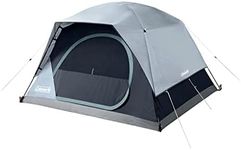Buying Guide for the Best 1 Person Winter Tent
Choosing the right 1-person winter tent is crucial for ensuring your safety, comfort, and overall experience during your winter camping adventures. Winter tents are designed to withstand harsh weather conditions, including heavy snow, strong winds, and freezing temperatures. When selecting a winter tent, it's important to consider several key specifications to ensure it meets your needs and provides adequate protection against the elements.Season RatingThe season rating of a tent indicates the types of weather conditions it is designed to handle. For winter camping, you need a 4-season tent, which is built to withstand heavy snow, strong winds, and cold temperatures. These tents have sturdier poles, more robust fabrics, and better insulation compared to 3-season tents. Always choose a 4-season tent for winter camping to ensure you stay warm and protected.
WeightThe weight of a tent is important, especially if you plan to carry it on your back for long distances. Winter tents tend to be heavier due to their stronger materials and additional features. Lightweight winter tents typically weigh between 4 to 6 pounds, while more robust models can weigh up to 8 pounds or more. Consider your physical ability and the distance you will be hiking when choosing the weight of your tent. If you prioritize mobility, opt for a lighter tent, but ensure it still offers adequate protection.
MaterialThe material of a winter tent affects its durability, weight, and weather resistance. Common materials include nylon and polyester, often with a waterproof coating like silicone or polyurethane. The tent poles are usually made of aluminum or carbon fiber for strength and flexibility. Look for high-denier fabrics (e.g., 70D or higher) for better durability and weather resistance. Choose a tent with materials that balance durability and weight, ensuring it can withstand harsh winter conditions.
VentilationProper ventilation is crucial in a winter tent to prevent condensation buildup, which can lead to dampness and discomfort. Look for tents with multiple vents, mesh panels, and breathable fabrics to allow for adequate airflow. Some winter tents have adjustable vents that you can open or close depending on the weather conditions. Ensure the tent you choose has good ventilation features to keep the interior dry and comfortable.
SetupThe ease of setting up a tent is important, especially in cold and windy conditions. Winter tents often have more complex designs with additional poles and guy lines for stability. Practice setting up the tent at home before your trip to become familiar with the process. Look for tents with color-coded poles and clips, which can make setup quicker and easier. Choose a tent that you can set up efficiently, even with gloves on, to minimize exposure to the cold.
SpaceWhile a 1-person tent is designed for solo use, it's important to consider the interior space for comfort and gear storage. Look at the tent's floor dimensions and peak height to ensure you have enough room to sleep comfortably and store your gear. Some 1-person winter tents have vestibules or gear lofts for additional storage space. Choose a tent with enough space to accommodate you and your gear without feeling cramped.
